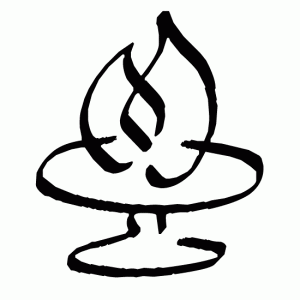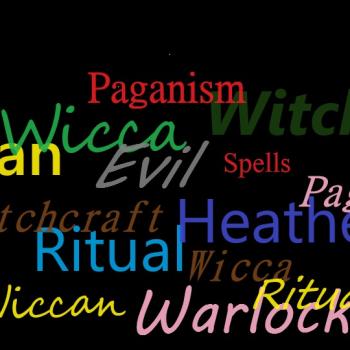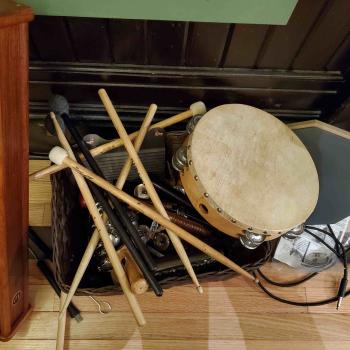My topic of the week has been diving and scanning. On the surface—and some of the way I had looked at it before I started talking with folks from The Way of the River—it seems as though scanners have breadth and divers have depth.
And then people answered my questions about scanners and divers and I learned about what it means to be both. Not both in the “I can’t decide so I guess I’m both,” or the common Pagan response of, “I don’t want to be put in a box.”
I learned that “both” may be in the sense of going deep and then checking around oneself, learning the landscape/seascape/Earthscape. Being, as one said, a submersible.

I think of the experiences of Pagan UU’s.
How Unitarian Universalism tends to be more broad than deep, though that’s not always true, certainly. Much depends on congregational desire and culture, ministers, and lay leaders. Choices like Soul Matters; Faith Forward; how congregations make liturgy; and new children’s, adult’s, and multigenerational religious exploration all affect folks’ experience of both depth and breadth.
Having Six Sources means that we risk poor liturgical/ceremonial design, cultural appropriation, and just plain confusion often. We run the risk of “ritual mash-up” How many services have you been to where the music, the readings, the sermon, and the prayers don’t seem to have anything to do with one another?
Breadth Avoiding Depth
In the attempt to please everyone, we offer transformational depth to no one.
And UU-Pagans/Pagan-UUs, like other UUs, run into even bigger concerns (I hope they are concerns!) of cultural appropriation. We have them often more than other UUs, I think, in that, for example, many white, non-indigenous-trained Pagans of many stripes and spots use sage to clear space. I’ve done it. I have sage upstairs by my altar, though I rarely use it (smoke alarm trauma).
But why?
Why do we, that is white Pagans like me, think that sage, appropriated from indigenous cultures, is the way to go?
Is this practice an attempt at breadth? Is it, as some I know would say, the Spirit blowing where It will? (Strange, or perhaps appropriate, as that’s a Christian reference.)
Or is it an attempt to somehow reach for the depth of others’ traditions?

A UU service with someone with no training who claimed to be a shaman “journeying” for the congregation, contemporary Pagan songs, a libation in the style of Heathenry, Quarters called each in a different style… what is our goal with a service like this?
Rev. Fred Muir, in his now-famous sermon about iChurch, pointed out that one of our great liabilities is our pathological attachment to individualism. The service I described above—one that actually happened, by the way—is rooted in this passionate and overdone individualism.
Unwilling to Say No
We have four people willing to calling Quarters, so each of them may do them as they see fit. We have someone willing to do a libation, so they can do it. The “shaman” is a well-respected congregant, so of course they may participate.
No.
That is terrible liturgical design. It aggressively mixes traditions that are different, at best, and in conflict at worst. By having radically different Quarter Calls, it also rattles the liturgical, deepening quality of powerful ceremony.
Pagan ceremony has the opportunity to reach head and heart. Through carefully constructed ritual with both repetition and innovation in Quarter Calls, call-and-response elements, songs that make sense with the theme of the observance/celebration, and closing Quarters with calls that mirror the opening…all this helps a ceremony make sense, and making sense on the conscious and subconscious level is what makes change in people’s lives.
And it’s what allows for both breadth and depth, which is also what is necessary for that transformative element.
And transformation into more of our great human beingness is, after all, what I think the goal of liturgy/ceremony/ritual is.
So just as we cannot have wildly deep, ecstatic, ritual of ordeal, complete with firedancers and a drum circle in the midst of a Sunday morning service, let us not try to be all things to all Pagans in one ritual on one Sunday.

For example, I always close my rituals, no matter whether Pagan or not, with the lines, “As with all things in the household of Earth, / we embrace for a while, and then let go.” I don’t change up my whole benediction every time. The opening lines are always the same, though the ending message is specific to the ritual we’re in.
Closing Thoughts
I have written for Nature’s Path for two years, since Imbolc 2015, I believe, with a post called, “I’ll Be Home for the (February) Holidays,” in late January of that year. And now I relinquish this space and place on the ides of February 2017.
While I am saddened not to write in this widely interfaith space, I hope that many of you will look for me at my homepage, The Way of the River, and that we may continue to get to know one another better. As Pagans, as UUs, and as UU-Pagans…and for that matter, just as human beings living in interesting times.
I go then with this benediction:
As with all things in the household of Earth
We embrace for a while, and then let go.
So let us be parted in joy
And hope to be returned to one another
At the next crossroads
In hope, in peace, and in love.
Blessings on you and on your house.
Rev. Catharine Clarenbach


















